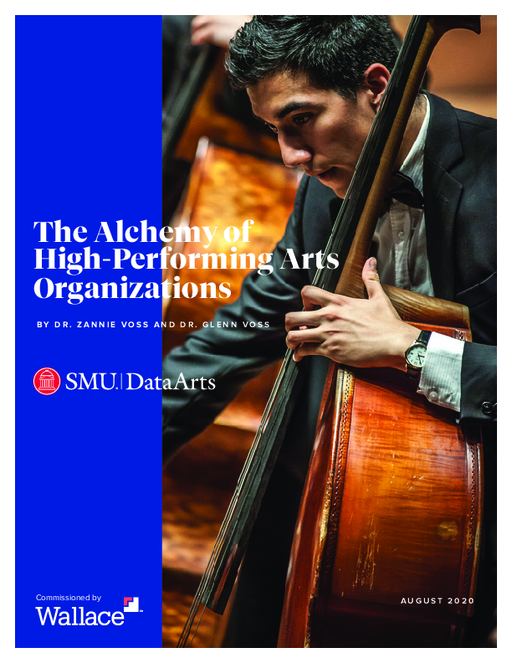- Author(s)
- Zannie Voss and Glenn Voss
- Publisher(s)
- SMU DataArts
- DOI Link
- https://doi.org/10.59656/A-G4329.001
Research Approach
Researchers at SMU DataArts consulted several datasets to find high-performing arts organizations. They mined data from sources such as the Census Bureau, the National Endowment for the Arts, tax filings, and SMU DataArts' own databases. They found organizations that produced better financial outputs than one could expect from those organizations' inputs. They then interviewed leaders of those organizations about the strategies behind their success.
Identifying the Highest-Performing Organizations
The researchers used seven measures as the outputs that define financial success:
- Ratio of capital to debt
- Contributions from individuals
- Revenue from subscriptions and memberships
- Community engagement
- Occupancy expenses such as rents and mortgage payments
- Surplus or deficit
- Diversity of revenue sources
They used many indicators as inputs, including the organization's budget, its age, the art forms it presents, the wealth of surrounding communities, and the number of other arts organizations in the area.
Such inputs vary widely from organization to organization. To compare organizations, the researchers used econometric techniques that estimate the outputs the average organization would produce if all organizations started with the same inputs. If an organization fared much better on at least four of the seven outputs, the researchers considered it a high-performing arts organization.
The researchers found 23 high-performing organizations. They contacted the top 10 for interviews. If an organization failed to respond, they contacted the next best performer. They continued until they had 10 organizations to explore. As they went down their list, they worked to ensure all arts sectors were adequately represented in the final analysis.
Identifying the Turnaround Organizations
The researchers used the same econometric techniques to identify turnaround organizations. They first looked for organizations whose performance was once well below the mean in the previous five years. From those organizations, they picked out those that had since exceeded the average for at least four output measures.
The researchers searched for news about each shortlisted organization to learn more about its financial circumstances. They eliminated those whose turnaround appeared to be a fluke or the result of a one-time financial bailout. They found 22 turnaround organizations, of which they interviewed 10.


